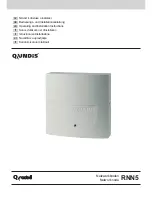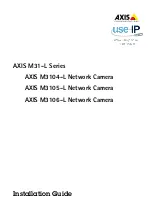
MES3500 Series User’s Guide
290
C
H A P T E R
3 8
ARP Learning
38.1 ARP Overview
Address Resolution Protocol (ARP) is a protocol for mapping an Internet Protocol address (IP
address) to a physical machine address, also known as a Media Access Control or MAC address, on
the local area network.
An IP (version 4) address is 32 bits long. In an Ethernet LAN, MAC addresses are 48 bits long. The
ARP table maintains an association between each MAC address and its corresponding IP address.
38.1.0.1 How ARP Works
When an incoming packet destined for a host device on a local area network arrives at the Switch,
the Switch looks in the ARP Table and if it finds the address, it sends it to the device.
If no entry is found for the IP address, ARP broadcasts the request to all the devices on the LAN.
The Switch fills in its own MAC and IP address in the sender address fields, and puts the known IP
address of the target in the target IP address field. In addition, the Switch puts all ones in the
target MAC field (FF.FF.FF.FF.FF.FF is the Ethernet broadcast address). The replying device (which is
either the IP address of the device being sought or the router that knows the way) replaces the
broadcast address with the target's MAC address, swaps the sender and target pairs, and unicasts
the answer directly back to the requesting machine. ARP updates the ARP Table for future reference
and then sends the packet to the MAC address that replied.
38.1.0.2 ARP Learning Mode
The Switch supports three ARP learning modes: ARP-Reply, Gratuitous-ARP, and ARP-Request.
ARP-Reply
The Switch in ARP-Reply learning mode updates the ARP table only with the ARP replies to the ARP
requests sent by the Switch. This can help prevent ARP spoofing.
In the following example, the Switch does not have IP address and MAC address mapping
information for hosts
A
and
B
in its ARP table, and host
A
wants to ping host
B
. Host
A
sends an
ARP request to the Switch and then sends an ICMP request after getting the ARP reply from the
Switch. The Switch finds no matched entry for host
B
in the ARP table and broadcasts the ARP
request to all the devices on the LAN. When the Switch receives the ARP reply from host
B
, it
updates its ARP table and also forwards host
A
’s ICMP request to host
B
. After the Switch gets the
Содержание MES3500 Series
Страница 16: ...Table of Contents MES3500 Series User s Guide 16 Appendix C Legal Information 357 Index 362...
Страница 17: ...17 PART I User s Guide...
Страница 72: ...72 PART II Technical Reference...
Страница 106: ...Chapter 9 VLAN MES3500 Series User s Guide 106 Figure 49 Advanced Application VLAN Port Based VLAN Setup Port Isolation...
Страница 178: ...Chapter 22 Policy Rule MES3500 Series User s Guide 178 Figure 98 Policy Example EXAMPLE...
Страница 360: ...Appendix C Legal Information MES3500 Series User s Guide 360 Environmental Product Declaration...
















































